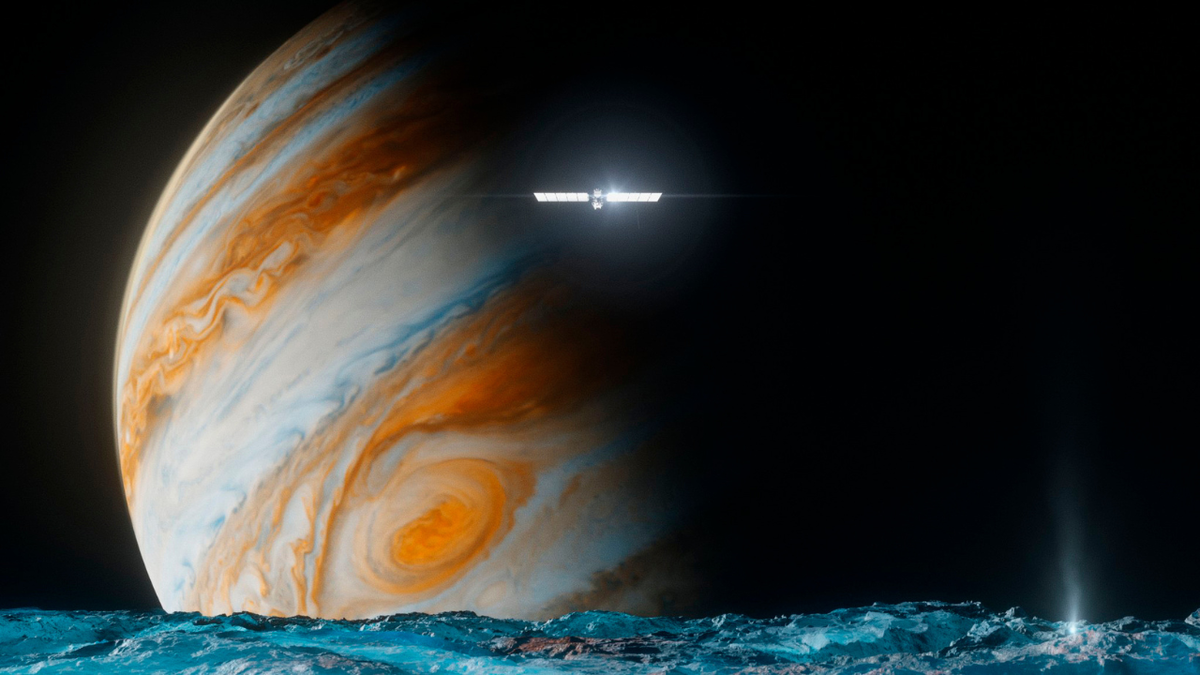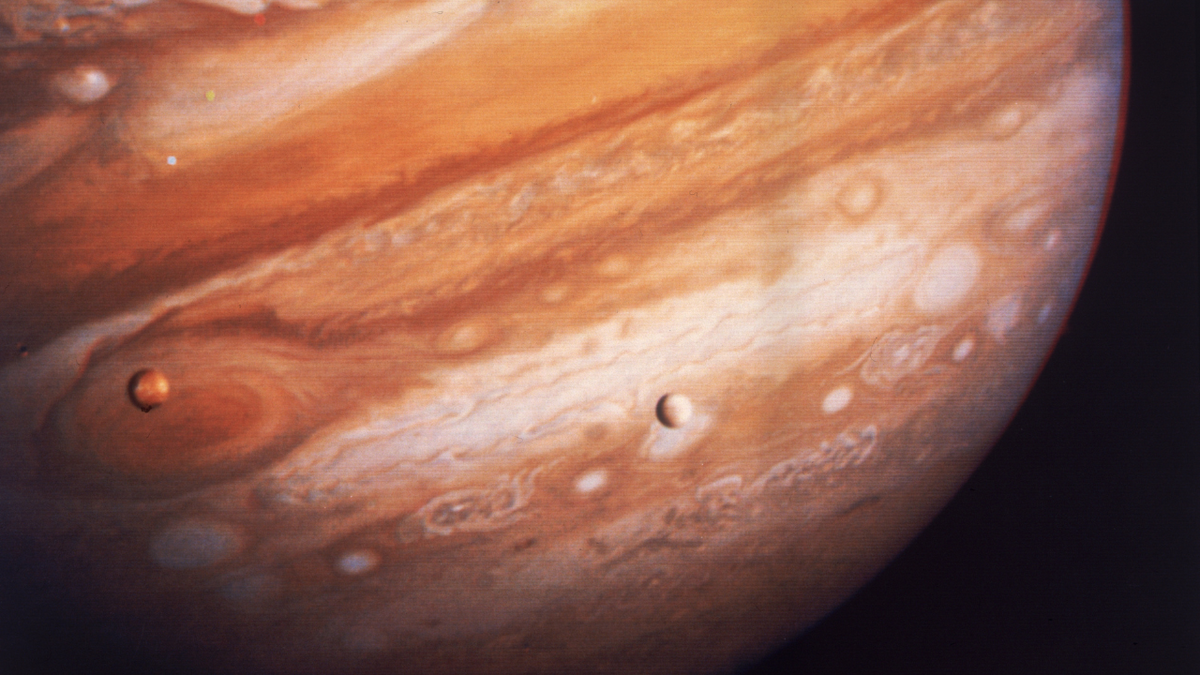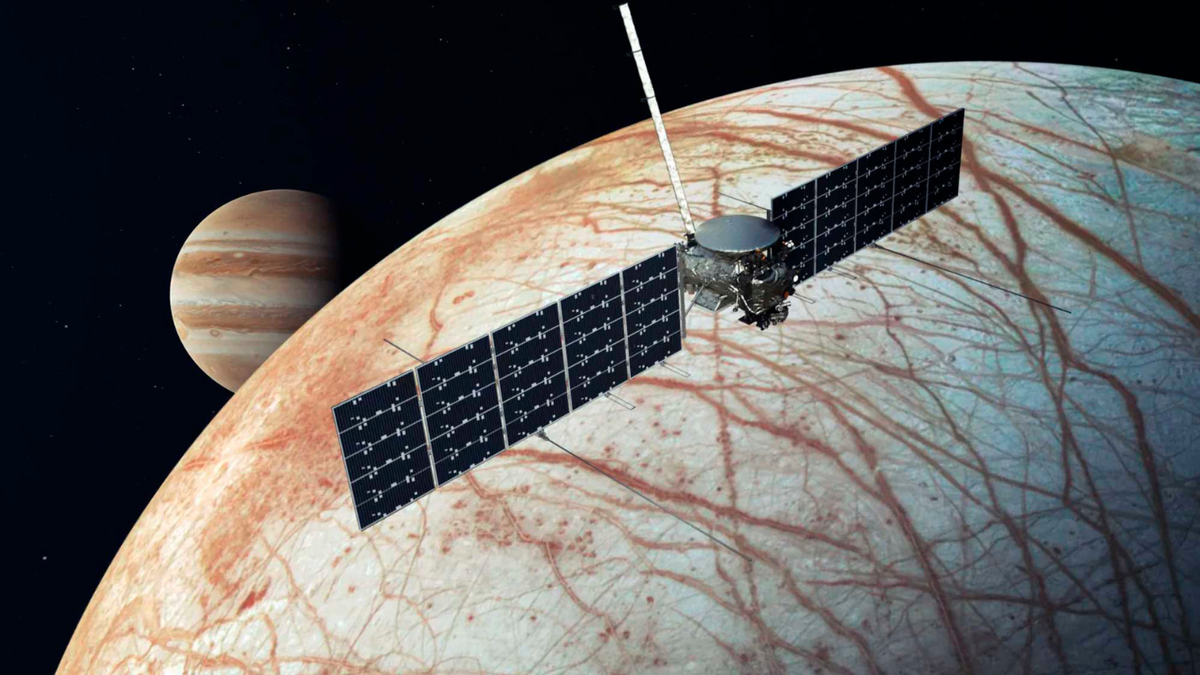- The Space Space Europe Clipper of NASA explores the Moon of Jupiter, one of the main candidates to find life beyond Earth.
- Europe Clipper will evaluate whether the conditions of Europe, like its ocean under an frozen crust, could support life.
- The spacecraft, the largest built of NASA to study another planet, will throw a heavy rocket on Spacex Falcon on board.
A NASA spacecraft is ready to leave for Jupiter and its moon Europe, one of the best bets to find life beyond Earth.
Europe Clipper will be below the frozen crust of the moon where it is believed that an ocean is near the surface. He will not search for life, but will determine if the conditions can support it. Another mission would be needed to eliminate the microorganisms.
“It is an opportunity for us to explore not a world that could have been billions of inhabitants years ago, but a world that can be habitable today,” said the scientist of the short program Niebur.
NASA launches a clearer view of Mars, blue rocks seen in the landscape
Its massive solar panels make clipper the largest trade built by NASA to investigate another planet. It will take 5 1/2 years to reach Jupiter and will be sneak 16 kilometers from the surface of Europe, considerably closer than any other spacecraft.
This illustration provided by NASA represents the Space Space Europe Clipper on the Moon, Europe, with Jupiter in the background. (NASA/JPL-CALTECH Via AP)
The elevation is aimed at this month aboard the Falcon Heavy Rocket of Spacex of the Kennedy Space Center of NASA. Mission cost: $ 5.2 billion.
Europe, the superstar between the many moons of Jupiter
One of the 95 known moons of Jupiter, Europe is almost the size of our own moon. It is embedded in a sheet of ice that is estimated to have between 10 and 15 miles or thicker. Scientists believe that this frozen crust hides an ocean that could have 80 kilometers or deeper. The Hubble Space Telescope has seen what seem to be geysers that explode from the surface. Discovered by Galileo in 1610, Europe is one of the four called Jupiter Galiles moons, along with Ganimede, Io and Callisto.
Looking for conditions that support life
What kind of life can it house Europe? In addition to water, organic compounds are needed for life as we know it, as well as a source of energy. In the case of Europe, which could be thermal openings in the ocean floor. The project’s attached scientist, Bonnie Buratti, imagines that any life would be primitive as the bacterial life that originated in the deep ocean openings of the Earth. “We will not know about this mission because we cannot see it deeply,” he said. Unlike missions on Mars, where inhabitability is one of the many questions, Clipper’s only work is to establish if the moon could support life in its ocean or possibly in any pockets of ice water.
Substructured Spacra
When the solar wings and antennas are developed, Clipper is about the size of a basketball court, more than 100 feet from end to end, and weighs about 13,000 pounds. Supersized solar plates are needed due to Jupiter’s distance from the Sun. The main body, approximately the size of a camper, is full of nine scientific instruments, including the radar that will penetrate the ice, cameras that will map almost the entire moon and tools to eliminate the contents of the surface of Europe and the dim atmosphere. The name listens to the fast sailing ships of centuries past.

This illustration provided by NASA represents the Space Nau Europa Clipper above the surface of the Moon Europe, the foreground and Jupiter. (NASA/JPL-CALTECH Via AP)
Looking for Jupiter to fly around Europe
The trip to the roundabout to Jupiter will cover 1.8 billion miles. To obtain an additional Oomch, the spacecraft will swing to Mars at the beginning of next year and then to Earth by the end of 2026. It arrives in Jupiter in 2030 and begins to work scientists the following year. While orbiting Jupiter, it will cross paths with Europe 49 times. The mission ends in 2034 with an accident planned in Ganyede: the largest moon in Jupiter and the solar system as well.
Europe Flybys is a great risk of radiation
There is more radiation around Jupiter than anywhere else in our solar system, in addition to the sun. Europe passes through Jupiter’s radiation bands, as it orbits the giant of gas, which makes it especially threatening for spacecraft. That is why clipper electronics is inside a vault with dense aluminum and zinc walls. All this radiation would be life on the surface of Europe. But it could break down the water molecules, and perhaps release oxygen to the ocean that can possibly feed the life of the sea.
Earlier this year, NASA was in a panic that the many transistors of the spacecraft could not support intense radiation. But after months of analysis, engineers concluded that the mission could proceed as planned.

Jupiter, the largest planet in our solar system, is shown with two of its satellites, Io on the left and Europe on the right, in March 1979. The image was taken by the Voyager Space Ship 1. (Space Frontiers/Hulton Archive/Getty Images)
Other visitors from Jupiter and Europe
NASA’s pioneering spacecraft and then two voyagers passed ahead of Jupiter in the 1970’s. The voyagers provided the first detailed photos of Europe, but from quite distance. The Galileo Space of NASA had repeated the Moon flies during the 1990’s, passing to 124 miles. Still in action around Jupiter, the NASA Juno spacecraft has been added to Europe’s photo album. Arriving in Jupiter a year after Clipper will find the Space Ship of Juice European Agency, launched last year.
Ganimede and other possible ocean worlds
Like Europe, it is believed that Júbo Moon Ganymede de Jupiter is hosting an underground ocean. But its frozen shell is much thicker, possibly 100 miles thick, making it more difficult to sound the environment below. The Callisto ice sheet can be even thicker, possibly hiding an ocean. The moon of Saturn Edreladus has geysers firing, but it is much further than Jupiter. Directed by Saturn’s Titan moon, he also suspected of having an underground sea. Although no ocean worlds have been confirmed beyond our solar system, scientists believe they are there, and may even be relatively common.
Click here to get the Fox News app
Messages in a cosmic bottle
Like many robotic explorers before, Clipper wears messages from the earth. It is attached to the vault of the electronics there is a triangular metal plate. On the one hand there is a design tagged “Water words” with representations of the word for water in 104 languages. On the opposite side: A poem on the moon of the poet of the spine loin and a silicon chip containing the names of 2.6 million people who enrolled in vicarious driving.
#NASAs #spacecraft #cross #Jupiters #frozen #moon #search #life #support #conditions
Image Source : www.foxnews.com
